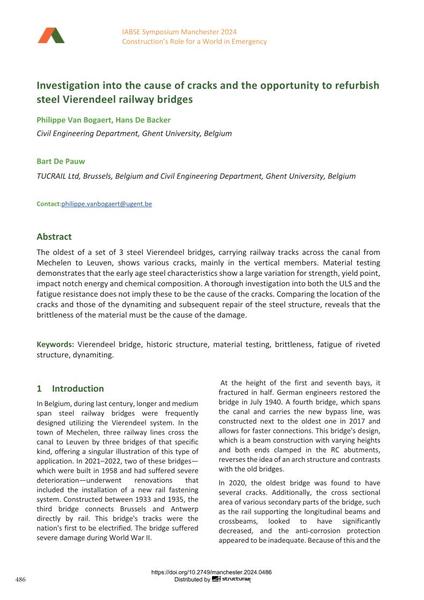Investigation into the cause of cracks and the opportunity to refurbish steel Vierendeel railway bridges

|
|
|||||||||||
Détails bibliographiques
| Auteur(s): |
Philippe Van Bogaert
(Civil Engineering Department, Ghent University, Belgium)
Hans De Backer (Civil Engineering Department, Ghent University, Belgium) Bart De Pauw (TUCRAIL Ltd, Brussels, Belgium and Civil Engineering Department, Ghent University, Belgium) |
||||
|---|---|---|---|---|---|
| Médium: | papier de conférence | ||||
| Langue(s): | anglais | ||||
| Conférence: | IABSE Symposium: Construction’s Role for a World in Emergency, Manchester, United Kingdom, 10-14 April 2024 | ||||
| Publié dans: | IABSE Symposium Manchester 2024 | ||||
|
|||||
| Page(s): | 486-492 | ||||
| Nombre total de pages (du PDF): | 7 | ||||
| DOI: | 10.2749/manchester.2024.0486 | ||||
| Abstrait: |
The oldest of a set of 3 steel Vierendeel bridges, carrying railway tracks across the canal from Mechelen to Leuven, shows various cracks, mainly in the vertical members. Material testing demonstrates that the early age steel characteristics show a large variation for strength, yield point, impact notch energy and chemical composition. A thorough investigation into both the ULS and the fatigue resistance does not imply these to be the cause of the cracks. Comparing the location of the cracks and those of the dynamiting and subsequent repair of the steel structure, reveals that the brittleness of the material must be the cause of the damage. |
||||


